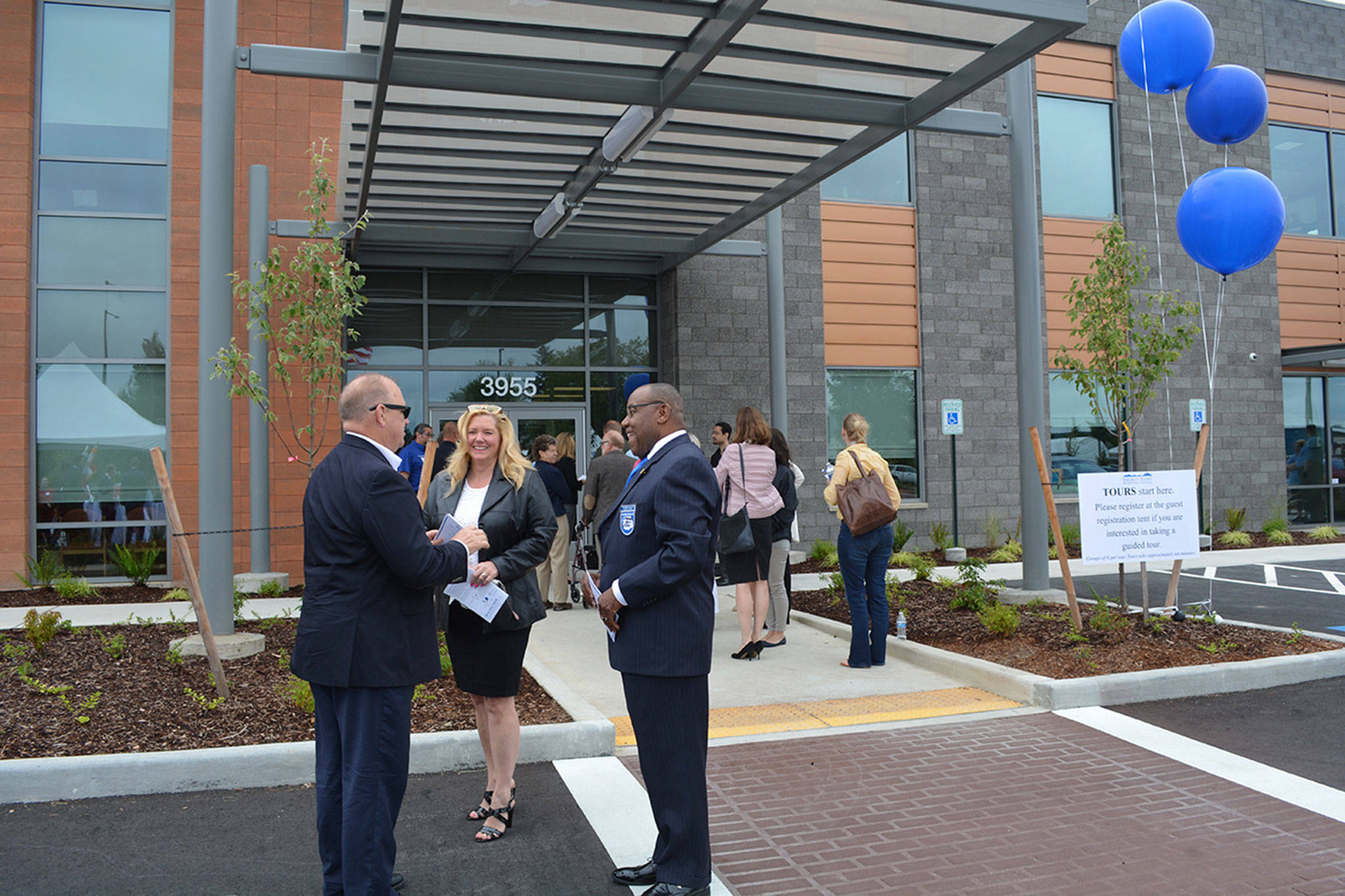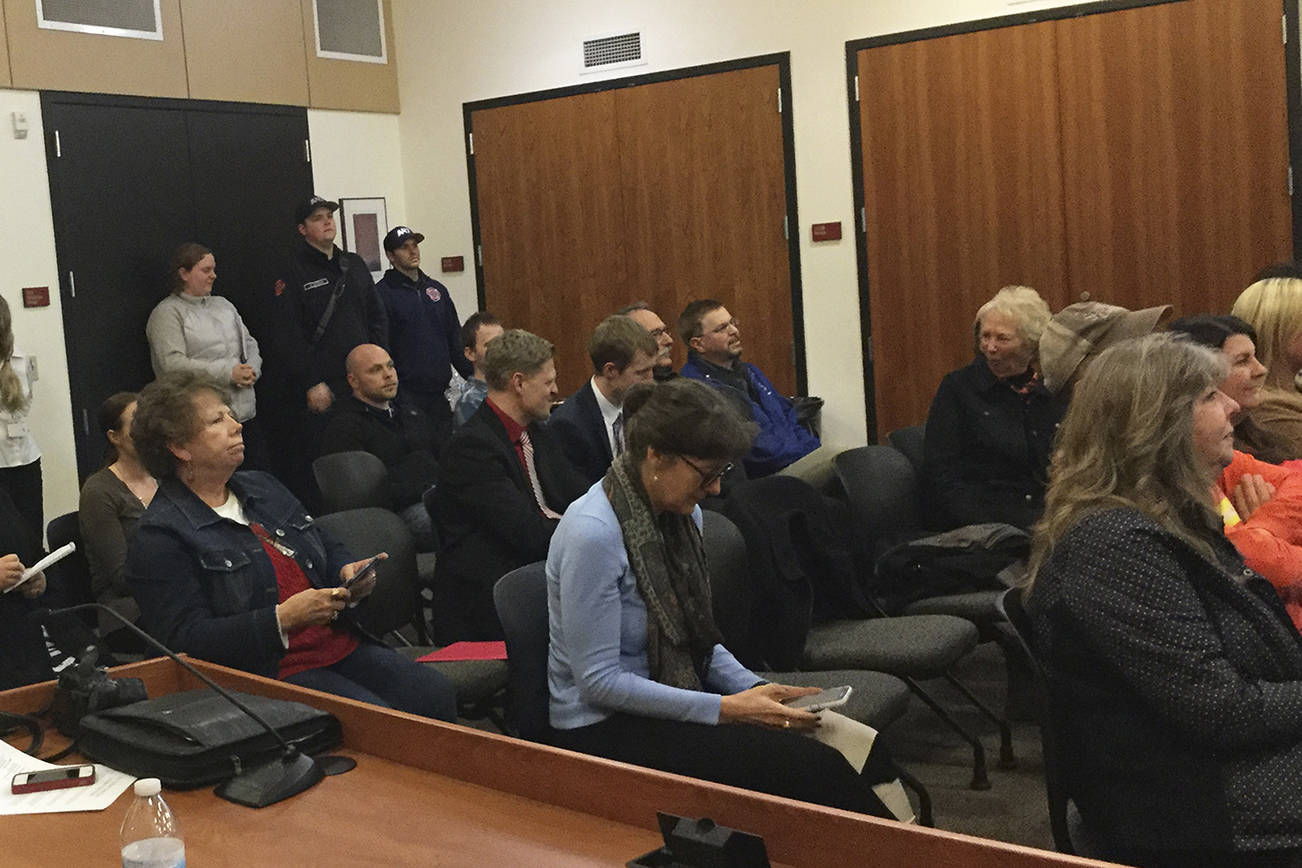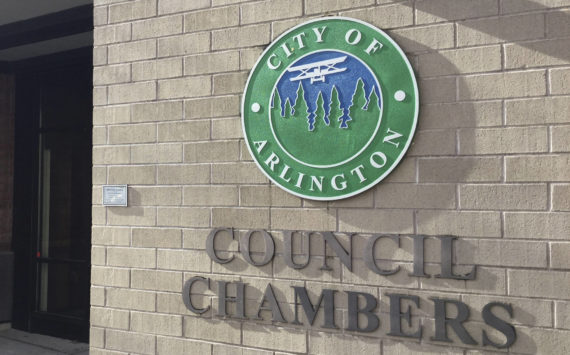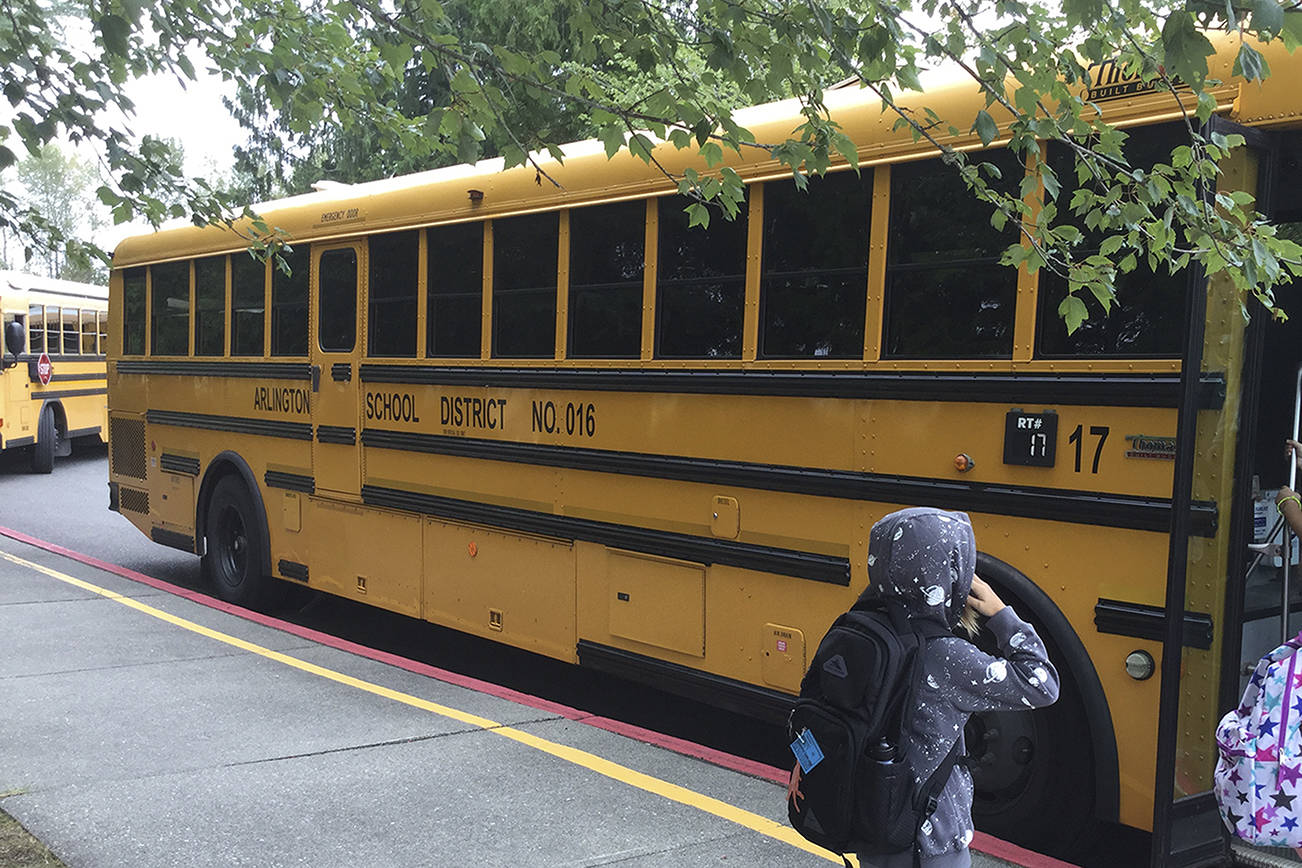ARLINGTON – In 2017, Arlington made strides in addressing the opioid drug epidemic, homelessness and boosting public safety, while making headway on economic growth and livability.
As the year draws to a close, here is our countdown of the Top 10 major news stories that grabbed headlines in The Arlington Times, and had people tapping the “share” button and re-tweeting online.
Honorable mention stories are: Arlington Airport Security getting tighter; Cannibas businesses are finding their pot of gold in Arlington; and Sno-Isle Library is coming soon to Smokey Point.
10. Summer heat wave
For sun-baked residents in Arlington, summer 2017 will be remembered for sizzling temperatures and a record-breaking 55-straight days without precipitation, beating the previous record set in 1951. During the streak that ended in mid-August, the mercury climbed into the low 90s, but more often hovered in the 70s or 80s, coupled with a continued smoky haze from fires in Darrington and British Columbia. Many locals beat the heat and headed for the Stillaguamish River and other local streams, lakes and the Puget Sound. The Stilly claimed the life of one Stanwood man who drowned Aug. 4 after jumping from Centennial Bridge.
9. Girl shot by officers
Last February, a 17-year-old girl reportedly suicidal and armed with a knife was shot by Arlington police then hospitalized after an early morning quarrel with her boyfriend near Division Street and Olympic Avenue. Community members gathered at City Hall with signs and placards to show support for the officers who had been placed on paid administrative leave via standard protocol. In December, the Snohomish County Multiple Agency Response Team closed its investigation and recommended felony assault and other misdemeanor charges for the recovered teen.
8. Regional Fire Authority dies
A Regional Fire Authority proposal to consolidate fire and EMS operation between Arlington, Marysville and Fire District 12 died in December after the Marysville City Council voted abruptly to end them. The mayors of the two cities are maneuvering to salvage the proposal for another look in January and reconvene the joint planning committee, while fire district officials continue to hold out hope that all three parties can reach a compromise to put the plan back on the table. The RFA would combine services and equipment, creating a more-regionalized agency, more-efficient use of services and equipment, and economies-of-scale savings..
7. Boys & Girls Club improvements, Quake Field baseball turf
The Boys & Girls Club and ballfields at Quake Field are one of Arlington’s signature community assets. In spring, the club celebrated the additions of a new teen center, as well as a new full-sized and half-sized gym that were part of the Stilly 2000 Youth Project. After-school activities and the latest in gaming technology are attracting young people, and Friday Teen Nights are averaging 50 participants. Two newly installed artificial turf ballfields were also part of a $3.8 million state package to expand activities for Stilly Valley youth after the Oso mudslide, combined with fundraising by the club. The main users, Stilly Valley Little League, can’t say enough good things about the near rain-proof ballfields. Local leaders expect the fields to be an economic driver, putting Arlington on deck to draw more baseball and softball tournaments, and recreational tourism to the area.
6. Smokey Point Behavioral Hospital/Stillaguamish Treatment Center
The governor in July helped open the new 115-bed Smokey Point Behavioral Hospital for people in the north Puget Sound area stricken with mental illness or struggling with opioid addiction. The hospital at 3955 156th St. NE is plugging an enormous gap in the communities and an unmet need for specialized psychiatric care and substance abuse services, providing both inpatient care for up to nine days and outpatient services for all ages. The opening marked the first new psychiatric hospital to open in Western Washington in 80 years.
While several state and local agencies are talking about where to build and how to fund more methadone treatment clinics to counter the opioid addiction crisis, the Stillaguamish Tribe stepped up with leadership and compassion to fill the need in north Snohomish County, just as they have done in the past. The Tribe is relocating its Island Crossing Healing clinic at SR 530 and Smokey Point Boulevard to a newly built two-story, 41,837-square-foot healing center with counseling services, located south of Arlington Airport just south of 172nd Street. The center to open in 2018 will provide services to Native Americans, veterans and non-native clients alike.
5. Smokey Point SODA
The Arlington City Council approved a Stay Out of Designated (Drug) Area law in August aimed at keeping repeat offenders out of the Smokey Point business district. The SODA area takes in the business and retail district, which has become a magnet for heroin and opioid abuse and other drug-related activity, as well as homelessness. The law provides that a defendant charged or convicted on drug offenses can be barred for two years under a municipal judge’s court order to stay out of the drug-prone area. Violators who enter the high visibility, high traffic area can be re-arrested. Police view the SODA as a law enforcement tool, and are looking forward to having an embedded social worker with police in the Smokey Point area to help people who want it into drug rehabilitation programs.
4. China’s Top Cub aircraft manufacturer breaks ground
China’s Top Cub Aircraft in July started work on a new manufacturing facility at Arlington Airport that will build planes for China’s expanding general aviation market. Top Cub is considered a cornerstone development for the airport, with 15 engineers and technicians when the facility opens near the end of January, then grow to 40 employees. They will manufacture 20 aircraft to start, ramping up to 50 aircraft in 2019. Top Cub is an early arrival in what local leaders hope will be a diverse mix of international and domestic investors looking to reap the benefits that will come with locating in the designated Arlington-Marysville Manufacturing Industrial Center.
3. School bond proposal
The Arlington School Board in November unanimously passed a resolution to put a $107.5 million bond measure to be put on the Feb. 13 special election ballot. If voters approve the ballot measure, funds would be used to build and renovate school facilities, and improve security across all the district’s schools. The big-ticket items would be replacing Post Middle School, substantial classroom and field improvements at Arlington High School, and security and environmental control improvements at all schools. With current 2000 bonds to be paid off in 2020, interest rates at near historic lows, and the future takeover by the state of local maintenance and operation levies to fund basic education, the opportunity to address the district’s building needs has never been more advantageous. Best yet, district officials say it can be done without increasing taxes from the 2017 total tax rate.
2. Arlington -Marysville Manufacturing Industrial Center
The stars began aligning in 2017 for the proposed Arlington-Marysville Manufacturing Industrial Center in the cities’ bid for designation from the Puget Sound Regional Council. The legislature gave the cities a valuable tax break to help attract businesses to the 4,019-acre industrial area in and around the Arlington Airport and southward, the state granted $100,000 in planning and infrastructure funding, while Comcast is creating a high-speed fiber connectivity network in the area, Snohomish County PUD is upgrading power substations, and Community Transit is preparing to expand commuter routes. All signs are point up for the future job-generating Goliath, which could happen by summer.
1. Arlington-Darrington comes up short in ABC competition
When the top three prize-winning cities in the America’s Best Communities competition were announced last April via live video, Arlington-Darrington’s name wasn’t among them. They were, however, one of the elite eight in the national community revitalization competition, and that makes the Stillaguamish Valley winners in our book. Over the course of three years, the cities not only gained visibilility to be known not just as a community in recovery after the deadly Oso slide, but also parlayed $145,000 in prize investment money and leveraged it into investments of over $91 million that is continuing to generate more economic activity locally in ways both big and small.








